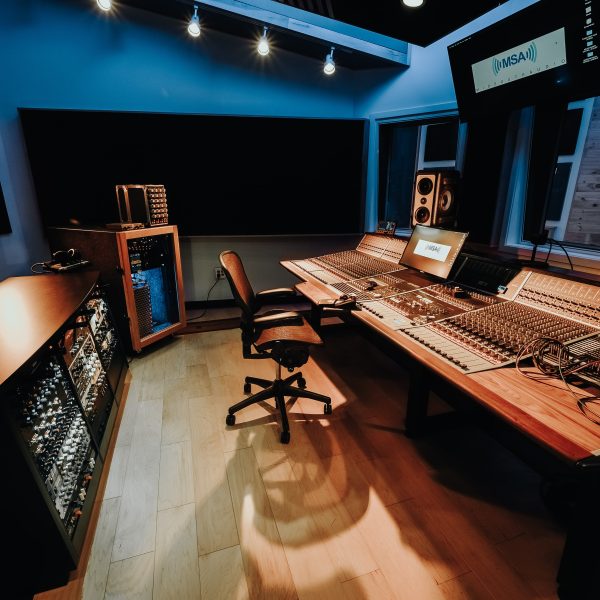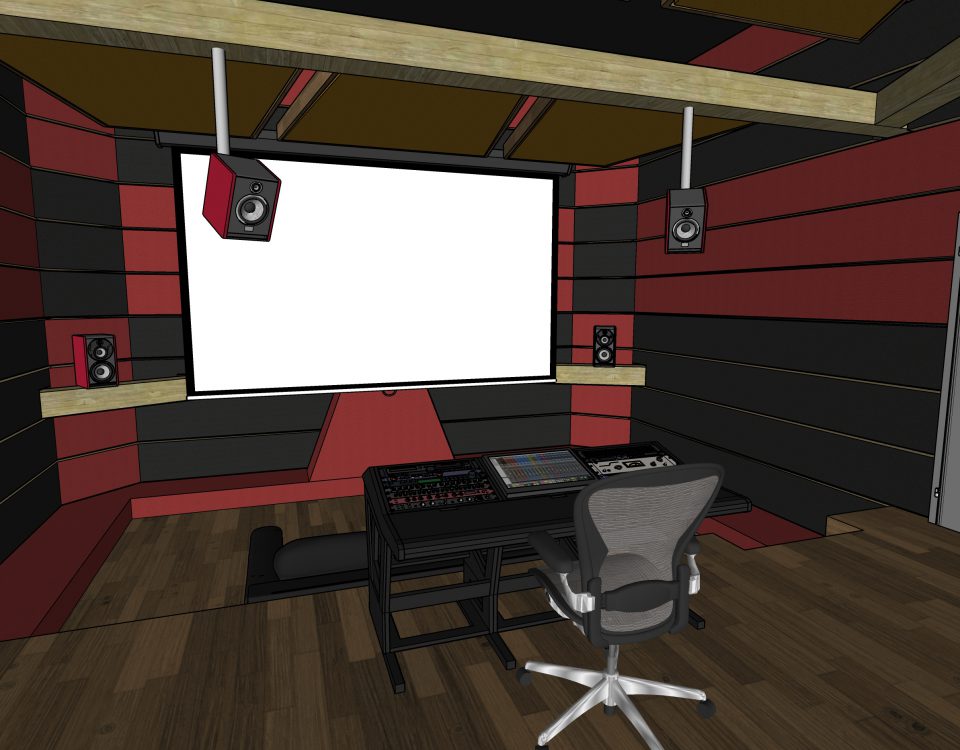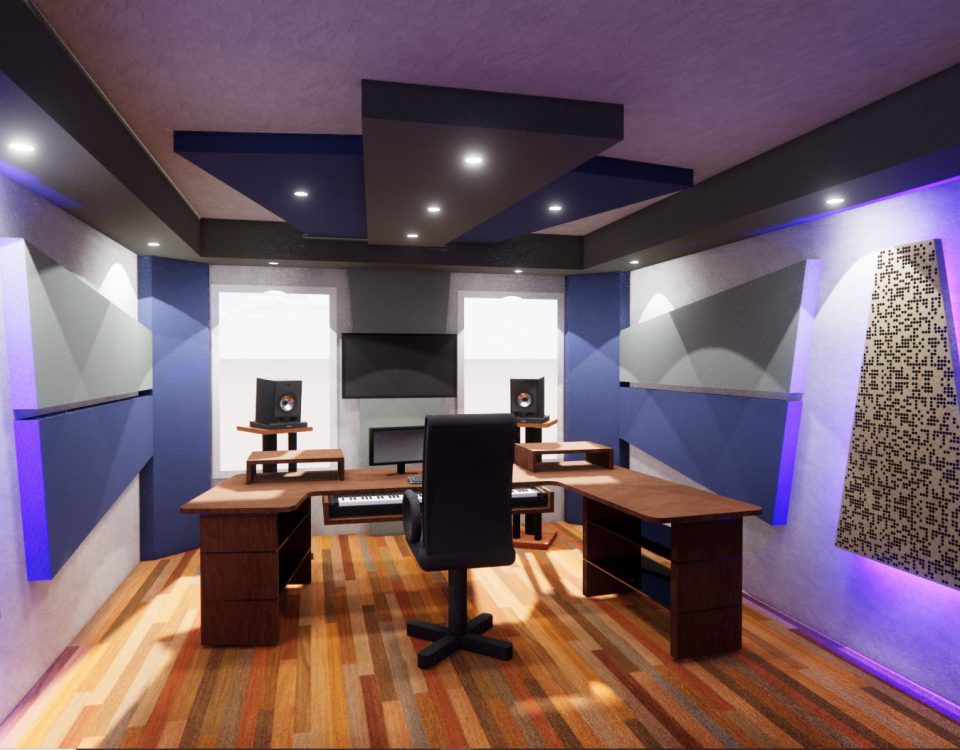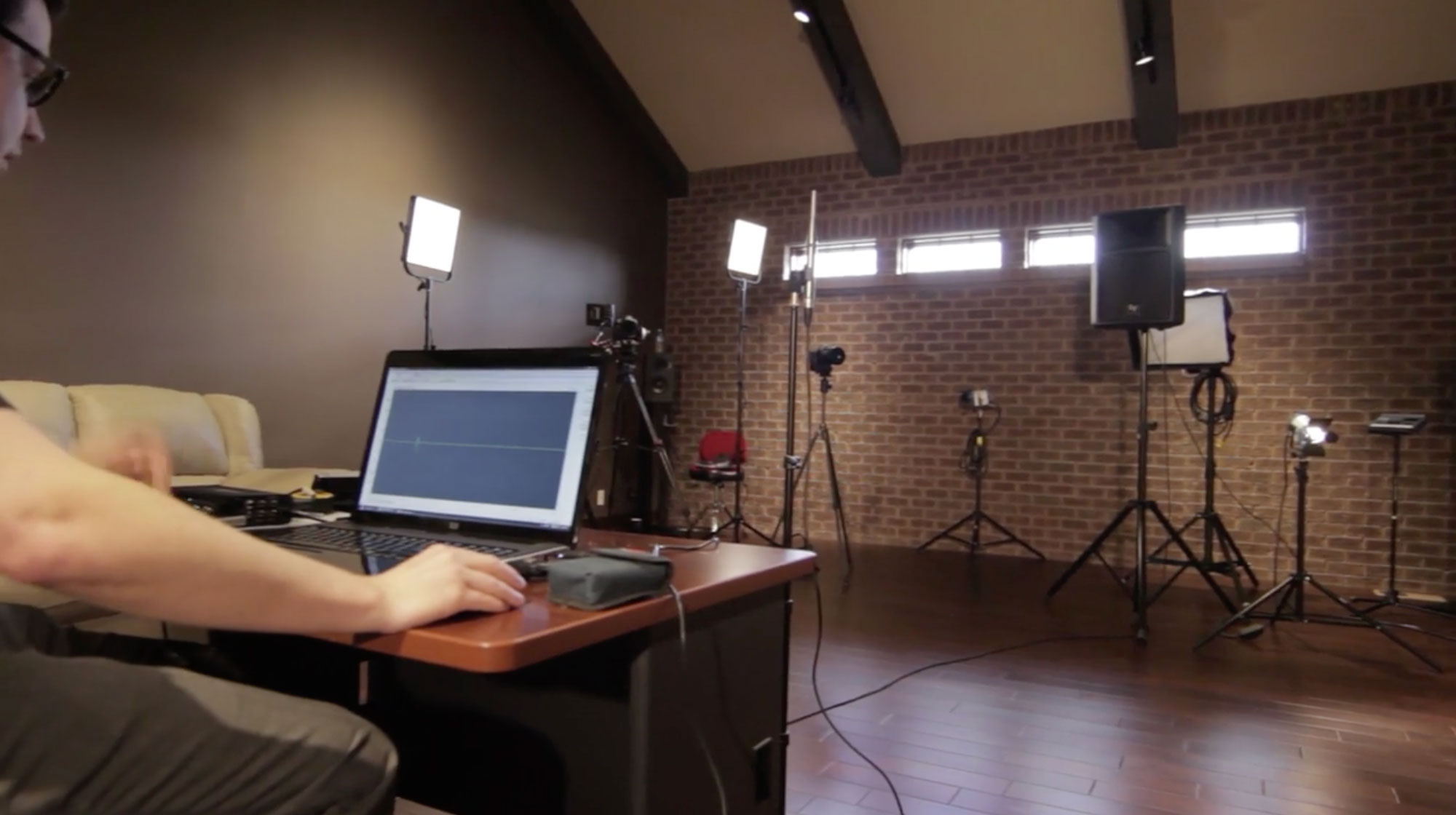
Acoustical Testing: Defining the Problem
April 30, 2018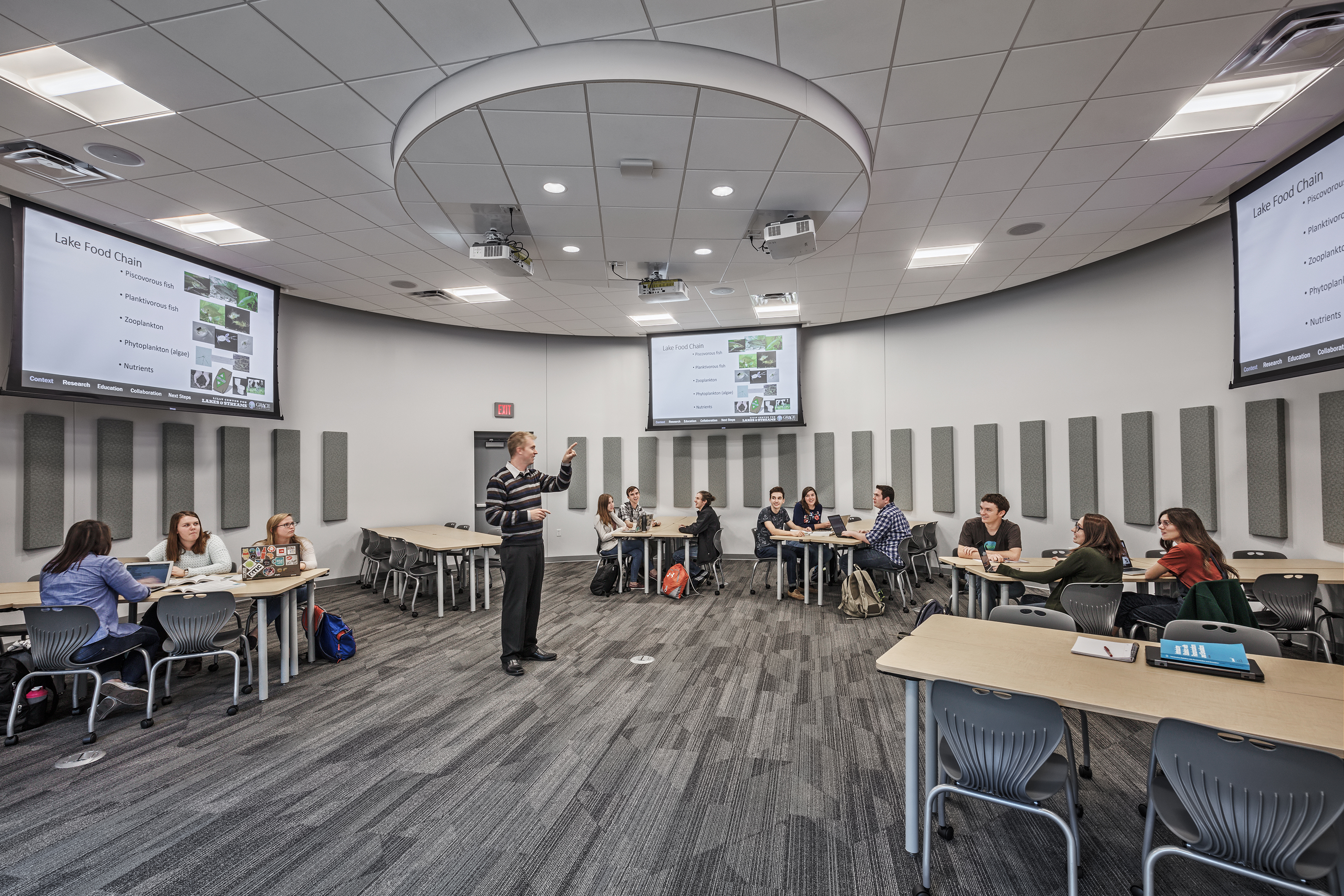
Classroom Acoustics: Common Issues, Causes, and Solutions
September 18, 2019LEED Certification and Acoustics
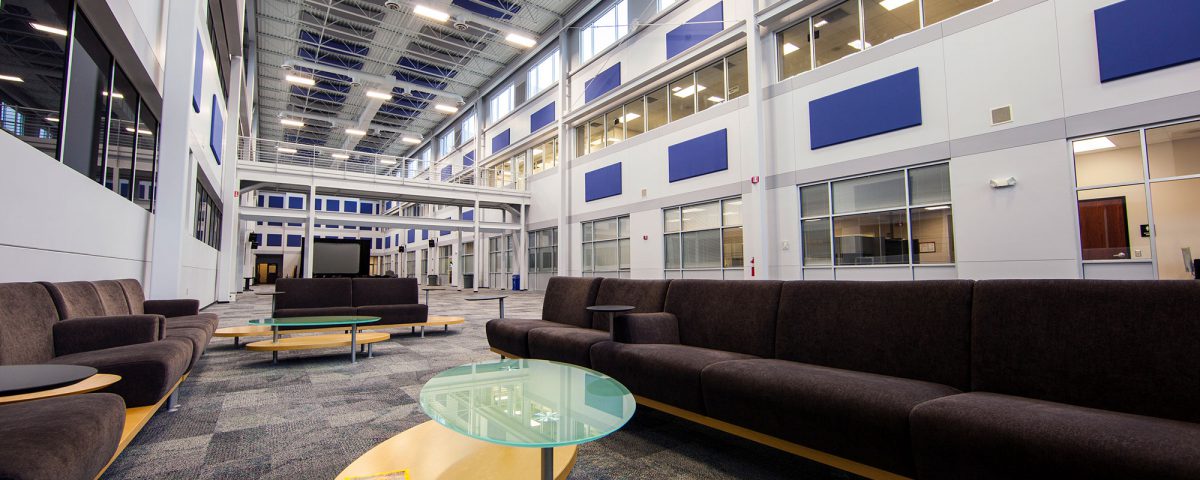
What is LEED?
According to the U.S. Green Building Council, green building is an effort to amplify the positive and mitigate the negative effects of the built environment on the natural environment throughout the entire life cycle of a building. Within green building, there are typically several key considerations taken into account throughout the planning, design, construction, and operation of a building: energy use, water use, indoor environmental quality, material section and the building’s effects on its site.
These elements make up the basic parameters for the different credit categories within the Leadership in Energy and Environmental Design (LEED) rating system. LEED acts as a framework for decision-making for project teams in all of these areas, rewarding best practices and innovation and recognizing exemplary building projects with different levels of LEED certification.
While it’s true that efforts were being made to create environmentally friendly structures before LEED, the rating system has provided a way to ensure that the policies are implemented effectively. The certification has also established an easily recognizable system that allows for all those involved in a project to demonstrate that certain environmental goals have been achieved. A LEED plaque is a universal mark of distinction that an increasing number of architects, designers, and engineers are attempting to achieve for their projects.
The latest LEED rating system, LEED v4.1, consists of five different areas addressing multiple types of projects: Building Design and Construction, Interior Design and Construction, Building Operations and Maintenance, Cities and Communities, and Residential. This system can be implemented in both new construction projects and existing buildings. Each of these five areas are broken down into various credit categories that reward points for fulfilling the listed green building standards. The number of points that are received determines what level of certification will be obtained. The different possible levels are:

Figure 1: LEED Certification Levels
Acoustics in the Workplace
Sound is an integral part of our everyday lives. We are constantly surrounded by our favorite music, the laughter of friends and family, the peaceful calm of nature, and many other memorable and enjoyable sounds. While our ears are often providing us with these kinds of positive experiences, they can cause many problems as well. There has actually been quite extensive research conducted regarding the dangers of exposure to loud noises over time. The CDC estimates that twenty-two million workers are exposed to potentially damaging noise at work each year. In the figure below, OSHA lists the Permissible Exposure Limits (PELs) that a worker should be exposed to a relative noise level. These values reflect the maximum amount of time that an average human could withstand the listed noise levels before hearing damage occurs.
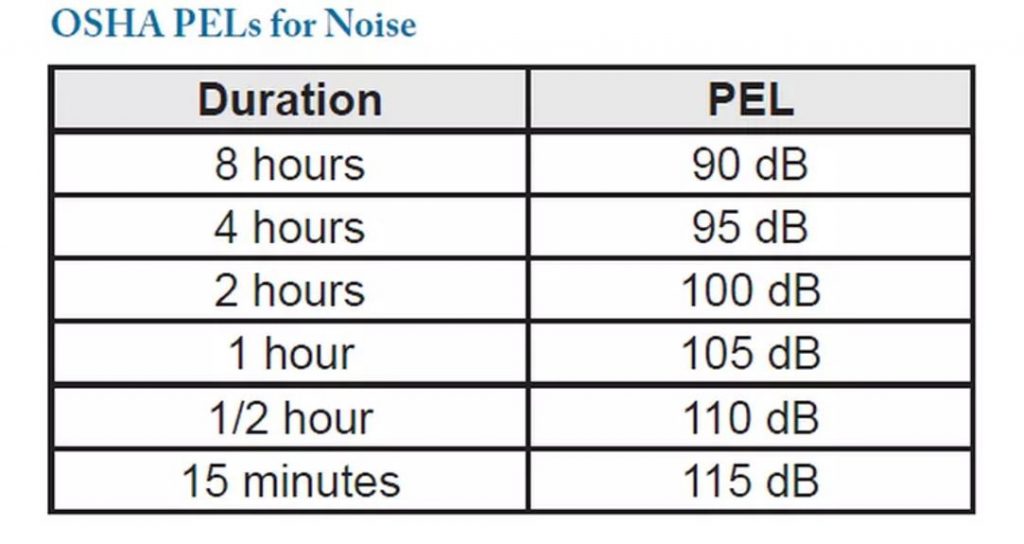
Figure 2: OSHA PELs for Noise
While these regulations help protect workers from permanent damage to the ears, there are many other acoustic issues that the everyday worker faces. A study conducted by the University of Sydney in 2013 found that lack of sound privacy is actually the most common frustration in the workplace. The data used for this research was gathered from the Center for the Built Environment (CBE) and reflects more than 8000 survey responders within the United States. The figure below shows the percentage of those surveyed who responded with a dissatisfaction to a particular category. By examining this graph, it is evident that the lack of sound privacy is the only category that has a majority of responders reporting dissatisfaction, with the percentage peaking at almost 60% in cubicles and about 50% in open offices that have little to no partitions.
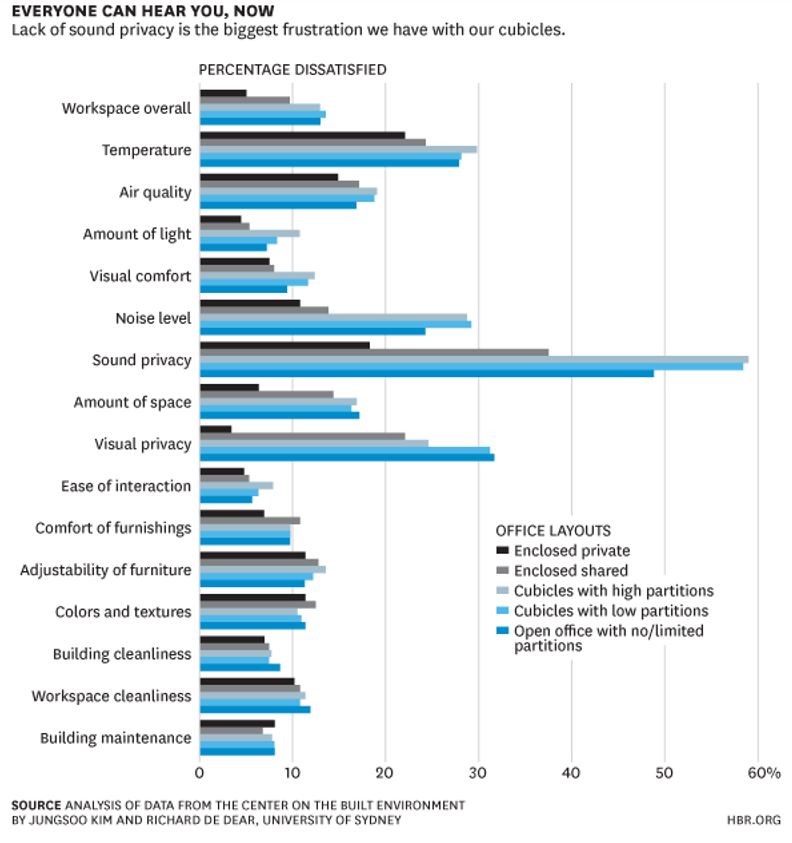
Figure 3: University of Sydney Study Analyzing Frustrations in the Workplace
What exactly is sound privacy and why is it so important? Sound privacy is the inability of outside listeners to hear a private conversation or other general noise. With an appropriate level of sound privacy, workers are able to make phone calls or speak privately with one another without other people easily listening in on their conversation. The other effect that occurs with a lack of sound privacy is a very distracting environment. Workers sharing a space can find it extremely difficult to focus when  another person is making a large amount of noise or having a conversation that you can clearly hear. While some background noise is usually not noticeable, distinct noises such as conversations, typing, and even music can cause serious distractions to employees. This is why the enclosed private office layouts rated their dissatisfaction with sound privacy so low. With every worker in their own space, there is no need to worry about the noise you make, or the noise made by your fellow coworkers.
another person is making a large amount of noise or having a conversation that you can clearly hear. While some background noise is usually not noticeable, distinct noises such as conversations, typing, and even music can cause serious distractions to employees. This is why the enclosed private office layouts rated their dissatisfaction with sound privacy so low. With every worker in their own space, there is no need to worry about the noise you make, or the noise made by your fellow coworkers.
Private offices are great for acoustics, but they are slowly being replaced by more open designs in order to promote an environment of collaboration and teamwork. While most agree acoustics are important, they are often overlooked while pursuing other design considerations. This is especially true when project designers make decisions to follow a green design.
Acoustics in a Green Design
LEED v4.1, the latest version of LEED, has taken acoustics into consideration more than it has in the past. In both the Building Design & Construction and Residential (specifically multifamily homes) categories, projects can get credit for improving acoustic performance. For schools, LEED guidelines aim to limit the HVAC background noise level to 40 dBA and minimize noise intrusion from exterior sources if the peak noise level exceeds 60 dBA during school hours. New constructions, data centers, warehouses and distribution centers, healthcare, and the hospitality industry can all also obtain a point for acoustic performance as well. To earn credit, the occupied spaces should meet requirements in two of the following categories: HVAC background noise, Sound Transmission (sound isolation between rooms and in/out of the building), and/or Reverberation time. For further reference about these requirements, see the LEED v4.1 Guide or contact a person experienced in the field of acoustics.
These standards are a definite step in the right direction and will likely result in an improved acoustical environment. However, acoustical problems are likely to persist if one only pursues these baselines. Excessive Reverberation Time (RT), for example, is a very common problem with large rooms. However, driving the RT of a room down is not as simple of a solution as it may seem. RT is frequency dependent, so it is important to create a room that has balanced RT across the frequency spectrum. Lowering the RT while creating an imbalance across the frequency spectrum can actually further complicate the room’s acoustics while technically meeting LEED criteria. This can be particularly detrimental in spaces where speech is critically important (auditoriums, conference rooms, churches, etc.). A room that over-absorbs high frequencies can make a room sound “boomy” and make it difficult to communicate effectively.
Outside of RT issues, other major acoustical problems can exist even if a room theoretically meets LEED requirements. Problems caused by the room’s geometry such as flutter and slapback echoes from parallel surfaces, sound focusing from concave surfaces, structural resonance issues, and frequency imbalances can all persist in a room that has a low RT, satisfactory STC ratings, and minimal HVAC noise. These issues are all very problematic and can create a fatiguing acoustical environment in an otherwise exceptional space.
Additionally, some techniques used to optimize certain LEED rating categories can be harmful to the acoustics of a room. For example, natural ventilation is a commonly used system in many green designs. It promotes better air quality and lower energy consumption. However, the use of an open ventilation system often incorporates large openings between the interior and exterior portions of a building, which allows noise from traffic, aircraft, and other environmental noise to enter the workspace. Another common example of green design that can complicate acoustics is the use of radiant heating and cooling to reduce cooling costs as well as the costs to produce air flow. This kind of system usually requires concrete walls and floors that absorb heat during the day and then release it back at night. This makes it difficult to lower the RT of a room, as concrete is a highly reflective surface. The exposed concrete causes the overall noise level of a space to increase, along with the room’s reverberation. In a similar vein, natural lighting is another common technique used in LEED-certified buildings. Having many windows can let in natural light, satisfying a LEED credit, but it again uses highly reflective surfaces, making it complicated to drop the RT by limiting the number of treatable surfaces to do so.
Even if enough surface is treated, it can still prove to be difficult to choose appropriate acoustical materials. Acoustical products are often manufactured without regard for material sustainability or chemical off-gassing. The most commonly available panels incorporate materials such as a fiberglass core with acoustically transparent facings made from fabric, plastic, vinyl, nylon, wood, or metal. Acoustical sealants and isolators often incorporate fiberglass, neoprene, and asphalt as well. Environmentally friendly products do exist; however, they are not often marketed as such.
How to LEED with Acoustics
Given all these complications that arise concerning acoustics and LEED certification, it may seem that the acoustics of a building will have to be sacrificed to achieve an efficient and environmentally friendly design. However, this is not the case: there are several ways to incorporate effective acoustical solutions within a design. 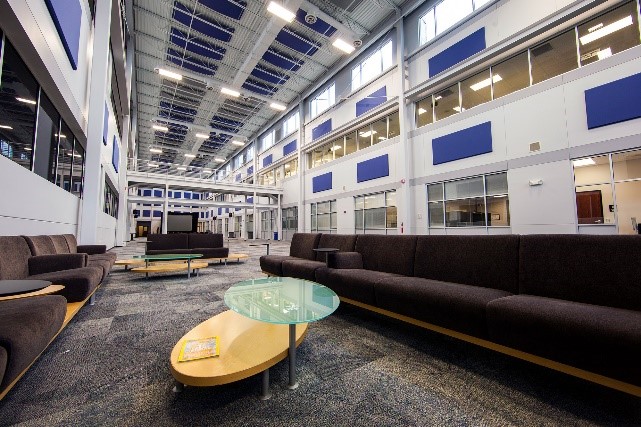 Various construction techniques, room treatment, and other acoustical products can be used to effectively compromise and work around some of the complications we have discussed so far. Green roofs (roofs with vegetation), for example, are a feature that can help environmentally while helping reduce noise transmitting by adding mass to the ceiling. Other environmentally friendly acoustical products exist that can also be used to help increase the amount of eco-friendly materials used in the building. For improving room acoustical properties, such as geometrical issues or RT problems, acoustical consultants often can incorporate creative design solutions to mitigate the issues found within a space. If there is not much available space for traditional acoustical treatments, acoustical products can be camouflaged into other design aspects of the room. Treatments can take the form of stretch-fabric systems, acoustical plaster, custom-designed treatment, or various other techniques that can blend into the building’s design. All of these different solutions are why the LEED rating system itself recommends that projects include an acoustical consultant in the design process.
Various construction techniques, room treatment, and other acoustical products can be used to effectively compromise and work around some of the complications we have discussed so far. Green roofs (roofs with vegetation), for example, are a feature that can help environmentally while helping reduce noise transmitting by adding mass to the ceiling. Other environmentally friendly acoustical products exist that can also be used to help increase the amount of eco-friendly materials used in the building. For improving room acoustical properties, such as geometrical issues or RT problems, acoustical consultants often can incorporate creative design solutions to mitigate the issues found within a space. If there is not much available space for traditional acoustical treatments, acoustical products can be camouflaged into other design aspects of the room. Treatments can take the form of stretch-fabric systems, acoustical plaster, custom-designed treatment, or various other techniques that can blend into the building’s design. All of these different solutions are why the LEED rating system itself recommends that projects include an acoustical consultant in the design process.
While improving the acoustics of a building can certainly require compromise with other design elements, it is by no means an immediate sacrifice that has to be made for LEED-certification. There are ways to improve the acoustics of a building while maintaining LEED standards, some of which (although not all) we have outlined above. As the need for environmentally friendly design methods continues to grow, architectural acoustics also evolves. We work to create designs that result in acoustically pleasing and comfortable environments while still allowing for LEED certification to be possible.

